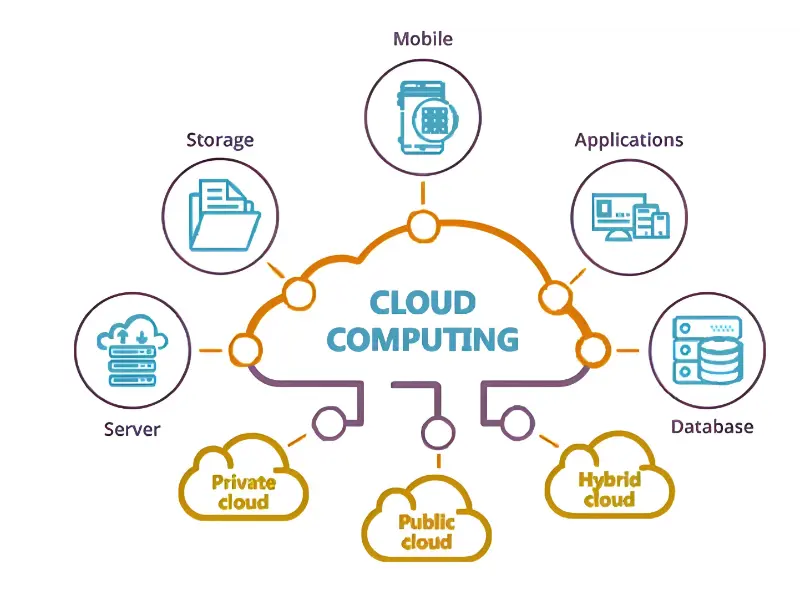- Cloud computing is believed to have been invented by JCR Licklider in the 1960s during his work on ARPANET to connect people and data anywhere, anytime.
- The cloud computing phase throughout the 21st century with many tech giants like Amazon, Microsoft, Google, and others launching cloud computing services.
- With increased data security and storage of critical information, the cloud has taken its place in meeting business needs.
- Cloud computing offers IT departments an alternative to increase flexibility and reduce costs, meeting market demands by improving resource utilisation and providing significant benefits to customers of all sizes.
Cloud computing, as a concept, is believed to have been invented by JCR Licklider. Its origins can be traced back to the 1950s and 1960s when mainframe computers were being developed.
The idea of sharing computing resources remotely can be considered an early form of cloud computing.
Who is JCR Licklider
Joseph Carl Robnett Licklider, abbreviated as JCR or Lick, was an American psychologist and computer scientist who is considered to have become one of the most prominent figures in the development of computer science and the history of general-purpose computing.
As an Internet pioneer, he had a vision for the global computer network long before it was built.
He did much of this by funding research that led to major advances in computing technology, including today’s canonical graphical user interface, and the ARPANet (Advanced Research Projects Agency Network), which is the direct predecessor of the Internet.
During his network research work on ARPANet, an attempt to connect people and data around the world, he introduced the cloud computing technology that is well known today.
Licklider was born on March 11, 1915, in St. Louis, Missouri, USA, and graduated from Washington University in 1937 with a bachelor’s in Physics, Mathematics, and Psychology.
Later in 1938, Licklider completed a master’s degree in psychology and earned a Ph. D. from the University of Rochester in 1942.
His interest in information technology and his years of service and accomplishments in a variety of fields led to his appointment that year as head of the IPTO at ARPA (US Department of Defense Advanced Research Project Agency) in the Year 1962. His aim led to ARPANET, a forerunner of today’s Internet.

The cloud computing phase throughout the 21st century
By the mid-2000s, Amazon created AWS (Amazon Web Services) and launched the Elastic Compute Cloud (EC2).
By 2008, Google had also launched a beta version of its search engine. Microsoft announced the release of a cloud computing service called Microsoft Azure for testing, deploying, and managing applications and services back in 2008.
In the year 2012, the Google compute engine was released but was rolled out to the public by the end of Dec 2013.
Oracle has introduced Oracle Cloud, which offers three main business services (IaaS, PaaS, and SaaS). Currently, for the record, Linux and Microsoft Azure share most of the parallel work.
Consumers first embraced the cloud through services such as Dropbox, Google Drive, iCloud, and other file storage offerings that replaced email and USB sticks for file sharing and local hard drives for backups.
These same use cases attracted enterprises to packaged SaaS backup offerings and low-cost IaaS storage services such as S3 and Azure Storage for off-site archiving.
As virtualisation replaces the enterprise data centre, organisations are augmenting these storage services with compute instances.
Also read: 7 cloud computing trends that will define 2024
Cloud computing evolves
The convergence of cost-conscious businesses rebounding from the 2008 financial crisis and the swift evolution of cloud technology prompted numerous organisations to consider cloud services as a substitute for costly private infrastructure.
The on-demand accessibility of cloud services spurred grassroots adoption within sizable enterprises.
This facilitated teams in initiating cloud setups using departmental budgets, bypassing the prolonged capital approval procedures for new hardware, or managing the intricate deployment and upkeep requirements associated with on-premises data centers.

Advantages behind cloud computing
Cloud computing has gained wide popularity in the last few years.
With the increase in data security and storage of important information, the cloud has taken its place in meeting business needs. Cloud works on the same principle as web-based email services for storing data in bulk and accessing it from any corner of the world.
Below are listed a few advantages of cloud computing in businesses.
Scalability: Cloud computing allows users to scale computing resources up or down based on demand. This flexibility ensures that organisations can easily accommodate fluctuations in workload without over-provisioning or underutilizing resources.
Cost Efficiency: Cloud computing operates on a pay-as-you-go model, where users only pay for the resources they consume. This eliminates the need for large upfront investments in hardware and infrastructure, making it cost-effective for businesses of all sizes.
Accessibility and Flexibility: Cloud services can be accessed from anywhere with an internet connection, enabling remote work and collaboration. Users can access applications and data from various devices, promoting flexibility and productivity.
Reliability and Redundancy: Cloud providers offer robust infrastructure with built-in redundancy and failover mechanisms. This ensures high availability and reliability of services, minimizing downtime and data loss.
Security: Cloud providers invest heavily in cybersecurity measures to protect data and infrastructure from unauthorized access, data breaches, and other security threats. They employ advanced encryption, identity, and access management, and threat detection technologies to safeguard sensitive information.
Innovation and Agility: Cloud computing enables rapid innovation by providing access to a wide range of cutting-edge technologies and services, such as artificial intelligence, machine learning, big data analytics, and the internet of things (IoT). Organisations can experiment with new ideas and deploy applications faster, gaining a competitive edge in the market.
Also read: IBM, Fortinet launch next-gen firewall security for IBM Cloud
The future of cloud computing
The future of cloud computing is poised to be dynamic and transformative, driven by several key trends and advancements:
Hybrid and multi-cloud environments: Organisations are increasingly adopting hybrid and multi-cloud strategies to leverage the strengths of different cloud providers and on-premises infrastructure. This approach offers flexibility, resilience, and cost optimisation.
Edge computing: As the internet of things (IoT) and 5G networks continue to expand, there’s a growing need for computing resources closer to the data source. Edge computing brings processing power and storage closer to where data is generated, enabling real-time analytics and reducing latency.
Serverless computing: Serverless computing abstracts infrastructure management, allowing developers to focus solely on writing code. This model is gaining traction for its scalability, cost-efficiency, and ease of deployment.
Artificial intelligence and machine learning: Cloud providers are integrating AI and machine learning capabilities into their services, enabling businesses to extract valuable insights from their data, automate processes, and enhance decision-making.
Security and compliance: With the increasing importance of data privacy and regulatory compliance, cloud providers are continuously enhancing their security measures and offering specialized compliance solutions to meet industry-specific requirements.
Quantum computing: While still in its early stages, quantum computing holds the potential to revolutionize various industries by solving complex problems that are currently intractable for classical computers. Cloud providers are exploring ways to offer quantum computing as a service.
Green computing and sustainability: With growing concerns about environmental sustainability, cloud providers are investing in renewable energy sources and implementing energy-efficient data center designs to minimize their carbon footprint.
From JCR Licklider’s invention of cloud computing, to its future development, it will continue to be shaped by innovation, flexibility, scalability, and a focus on meeting the evolving needs of businesses and consumers in an increasingly digital world.

